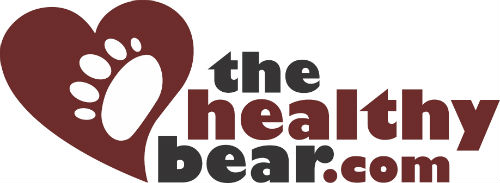Hey there guys,
Today I was alerted to this video on Stephen Fry’s Twitter stream:
The End of AIDS? from Stop AIDS Campaign on Vimeo.
This is an interesting video. The thought of eradicating HIV/AIDS in a single generation is amazing.
Today I thought it might be a good to discuss the research and science behind this idea.
Through the introduction of effective treatments of HIV we have learned that lower viral counts (from effective treatments) decreases the rate of HIV transmission. It stands to reason that the lower the amount of virus in the body, the lower the chance of it being transmitted.
From a community perspective, the more people who are on successful treatments the less virus there is present in the community able to be spread, thus the burden of HIV is lower as well as a reduced rate of new infections. This treatment rational has been called “test and treat” with the thought process of starting antiretroviral (ARV) treatments at the time a person is discovered to be HIV positive.
It’s understood that early treatment has benefits not only to the patient but also to the community as a group. This is the same rational behind vaccinating people for diseases like rubella, measles and mumps.
Currently in Australia the guidelines for starting HIV treatments are if the CD4 (T cell) count drops below 350, viral load is above 100,000 copies or if the patient develops an AIDS defining disease such as Karposi Sarcoma or a PCP pneumonia. Until that point it’s suggested to encourage healthy lifestyle and to regularly monitor viral load and immune capacity.
How much does “test and treat” cost?
While it’s easy to say “sure, put people on treatment early, it’s ‘win win’ a for the patient and the community” what are the costs of the extra people on treatments?
From a monetary perspective a standard treatment regime can end out costing more then $1000 Australian a month. Thankfully the government chooses to subsidize these medications allowing treatment to cost less then $50 a month for those on a health care card. That said from a community perspective the more people on treatment the higher the cost on the health care system, or the individual if you live in a country that does not subsidize medications.
Most difficult is for the third world countries where the HIV rates are continuing to rise with significant barriers, including cost, to starting treatment. As discussed in the paper “Should we try to eliminate HIV epidemics by using a “Test and Treat” strategy?” who should be treated first, the sickest member of society or the person with the most money?
Assuming that the primary purpose of ARVs is prevention Dodd et al. argue that behavioral “core” groups should be prioritized to receive treatment. However, if the primary purpose of ARVs is therapeutic then the sickest should receive treatment. Recently it has been reported that only ~40% of people in need of ARVs are receiving treatment. Many individuals in Sub-Saharan Africa are initiating treatment with a CD4 cell count less than 100 cells/microL. These numbers strongly indicate that before a “Test and Treat” strategy is implemented there is an urgent need to focus on a “Find and Treat” strategy. The goal of such a strategy would be to attain universal access to necessary medications for those most in need and to ensure that treatment is sustainable.
It’s not just about money.
HIV medicines are complex and for many people there can be significant side effects. Common side effects include:
- Nausea (feeling sick)
- Diarrhoea
- Tiredness
- Difficulty sleeping
- Headaches
- Peripheral neuropathy (problems with the nerves in the legs, such as pain)
- Skin rashes
- Lipodystrophy (changes in the way body fat is distributed around the body)
If people are being started on medications early is there a risk that treatment may be abandoned if the side effects are considered too much to live with?
Is medications the answer?
In an interesting paper in the Lancet: “Could widespread use of combination antiretroviral therapy eradicate HIV epidemics?” a mathematical model was created to see the impact of “test and treat” on one of the worlds highest HIV positive populations (at least in 2002) the gay community in San Francisco.
This study looked at the effects of ARV treatment, the development of treatment resistant strains of HIV as well as sexual behaviour on the load of HIV in a community. The study had four main findings:
- The more people who are on HIV treatment the lower the severity of the HIV epidemic.
- Decreasing the “infectivity” of HIV by both use of ARV’s and increased safe sex will greatly reduce the severity of the HIV epidemic
- If highly resistant strains of HIV emerge this will greatly impair ARV medicine’s ablity to reduce HIV burden.
- Higher levels of risky sex cause big swings in the ability of ARV’s to reduce HIV burden.
What does this mean?
While effective HIV treatment is fantastic in reducing levels of HIV in communities it needs to be paired with continued reinforcement of the importance of safe sex. Safe sex works on two levels: helping reduce the amount of resistant strains of HIV and helping reduce HIV transmission and other sexual infections that affect HIV levels, i.e. syphilis, gonorrhoea and chlamydia.
By engaging in a holistic view of HIV and it’s impact on communities indeed there is a chance that HIV could be conquered like the hope displayed in the video above. In the process of this work it’s vital to ensure the care, support and love for those already infected, and working closely with vulnerable communities at greatest risk with the least resources.
With focus of strategy, funds and a unified direction the eradication of HIV could very well be a realistic goal. We have a wonderful opportunity here, let’s hope politics will not destroy it’s potential.
Yours in good health.
Dr George

Leave a Reply